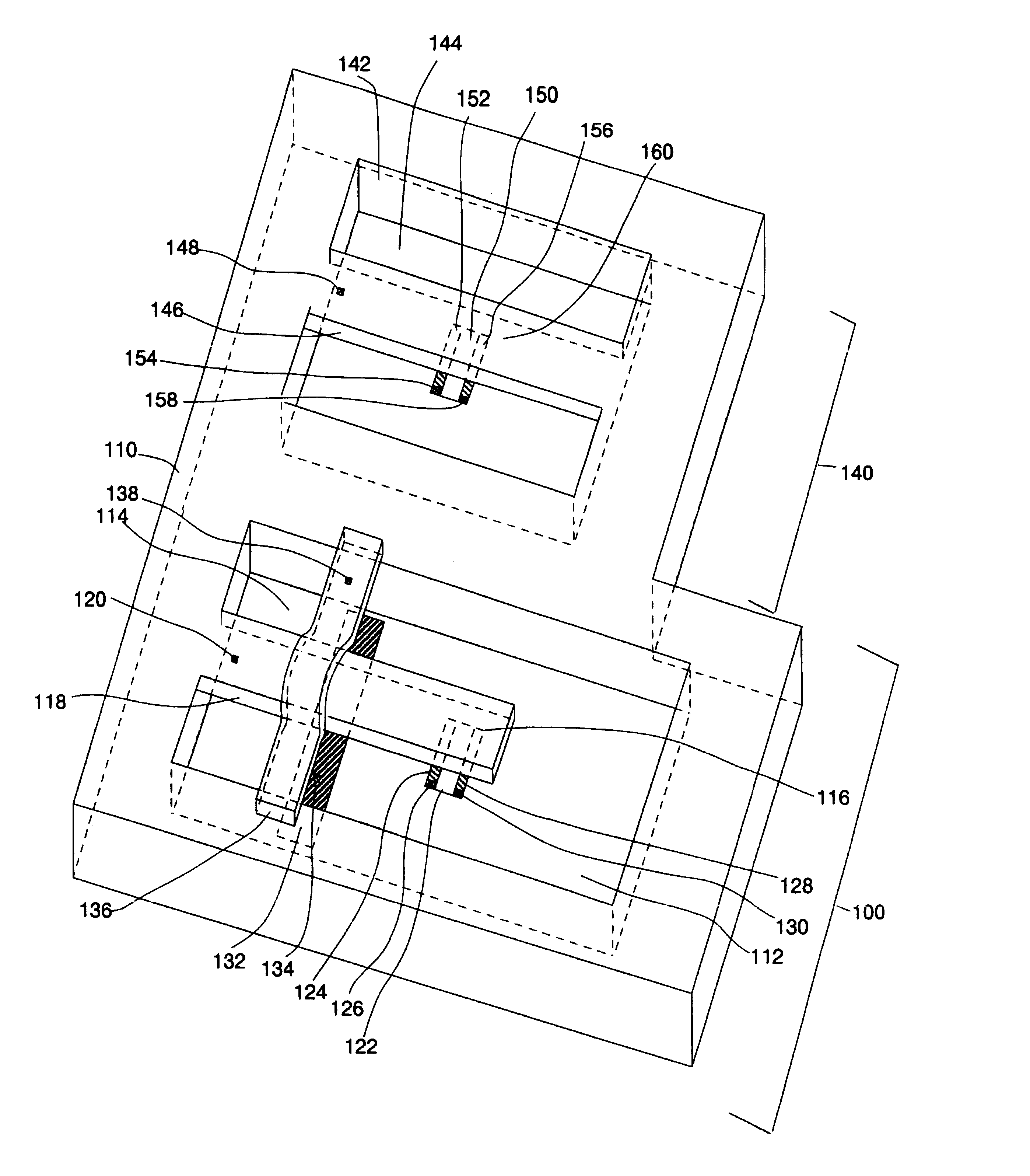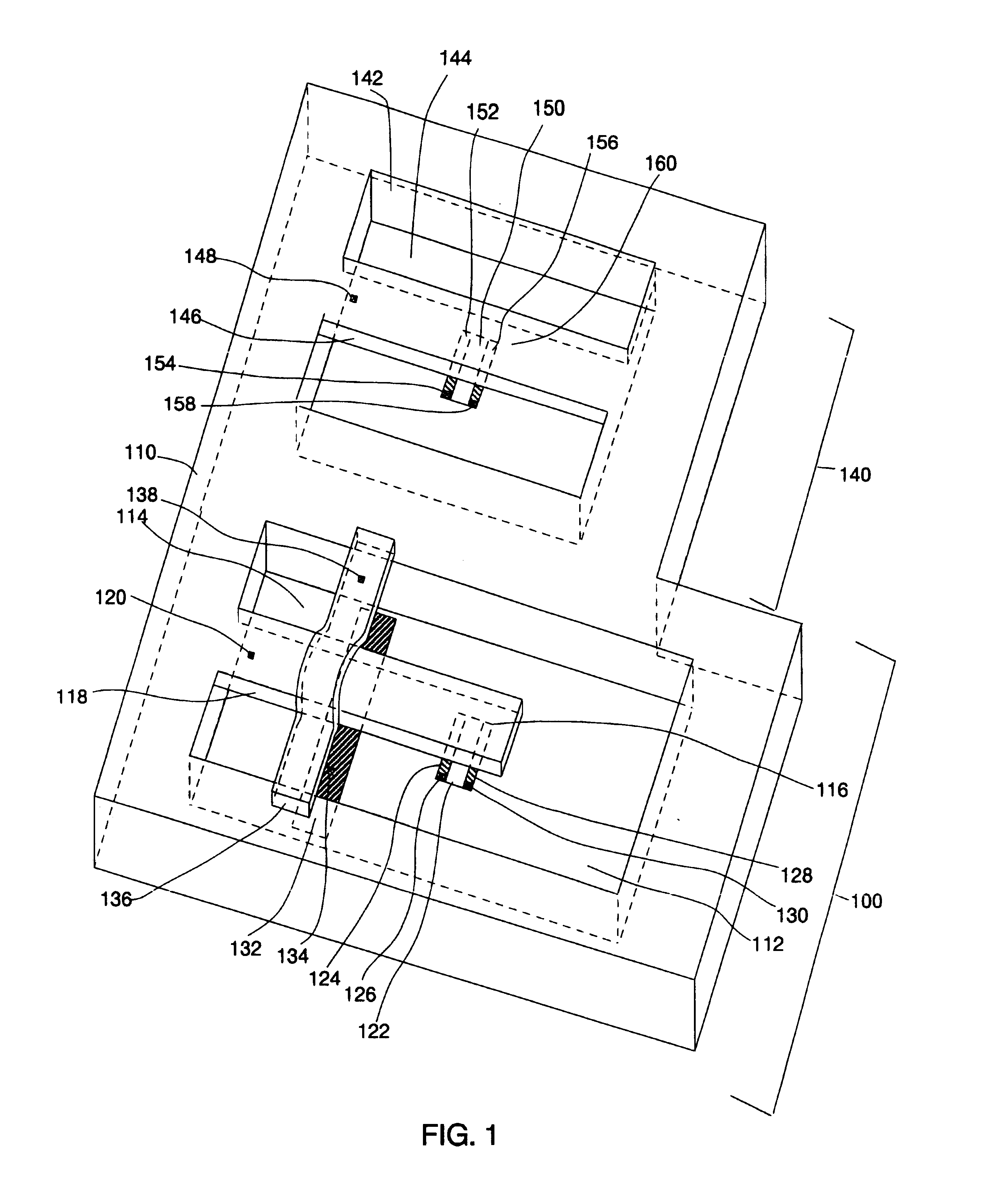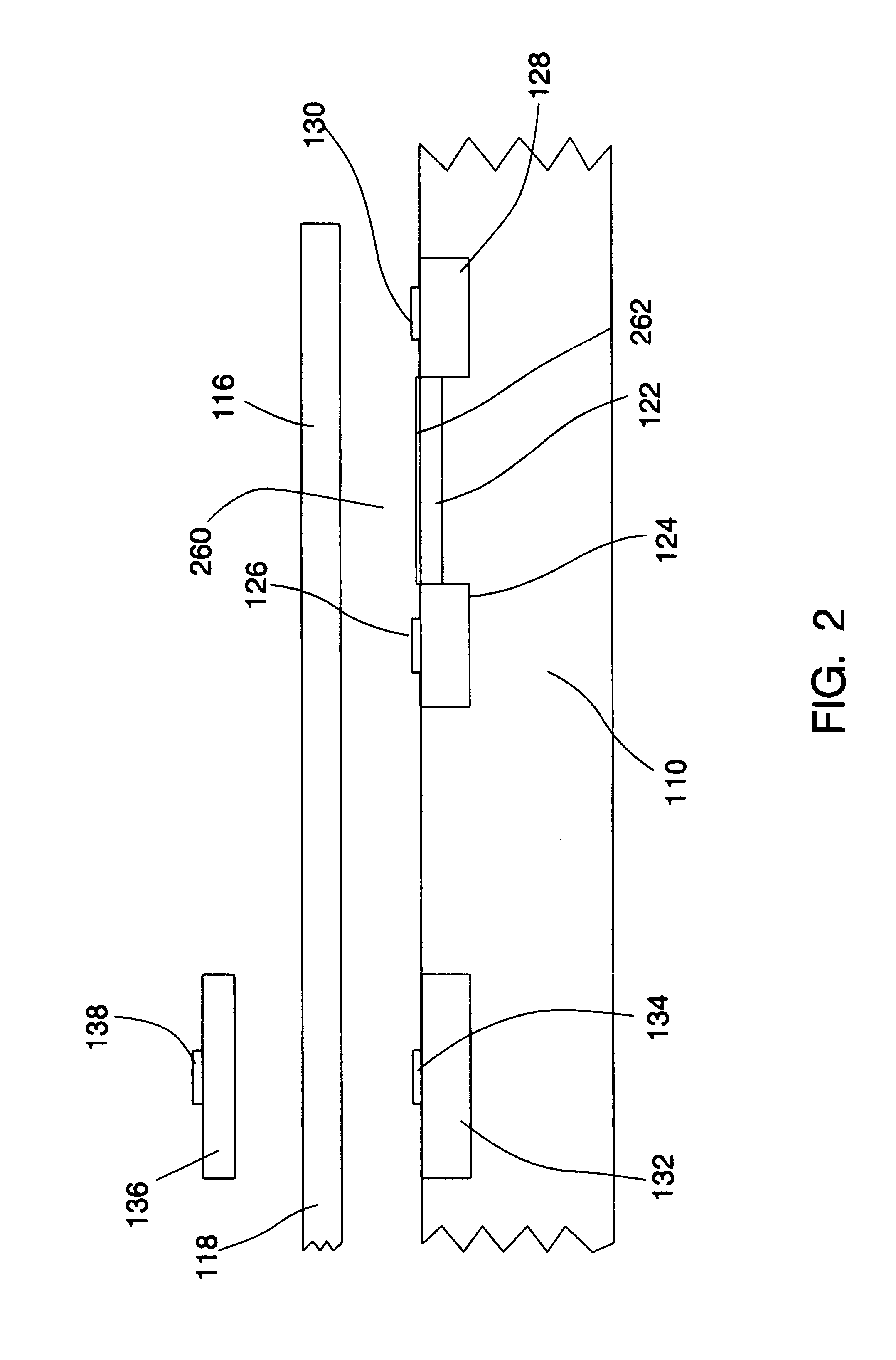Differential wideband vibration sensor
a wideband vibration sensor and wideband technology, applied in the field of accelerometers, can solve the problems of high bandwidth devices, difficult process of calibrating any given accelerometer to detect vibration as differentiated against a "zero" vibration level, and limited sensitivity, so as to achieve cost-effective, automatic self-calibration during operation, and eliminate the effect of costly precision tuning of individual units
- Summary
- Abstract
- Description
- Claims
- Application Information
AI Technical Summary
Benefits of technology
Problems solved by technology
Method used
Image
Examples
Embodiment Construction
A preferred embodiment of the present invention is depicted in FIG. 1. Referring to FIG. 1, vibration sensor 100 comprises a base 110 with a cavity 112 and a cavity floor 114 in a central region of base 110. A moveable suspended mass 118 such as the illustrated cantilever beam, thinner than the depth of the cavity, projects horizontally from a top surface of one end of base 110, partially extending over central cavity 112. An electrically-conductive suspended mass (cantilever beam) contact pad 120 is positioned on the top surface of moveable suspended mass 118. A gate region 116, is defined as the free end of moveable suspended mass 118 immediately above a channel 122, i.e., as that region of moveable suspended mass 118 that is sufficiently proximate to said channel 122 so as to electromagnetically interact with said channel 122 in a substantial manner. An external power means is connected to cantilever beam contact pad 120 in order to deliver specified voltages to gate region 116 o...
PUM
 Login to View More
Login to View More Abstract
Description
Claims
Application Information
 Login to View More
Login to View More - R&D
- Intellectual Property
- Life Sciences
- Materials
- Tech Scout
- Unparalleled Data Quality
- Higher Quality Content
- 60% Fewer Hallucinations
Browse by: Latest US Patents, China's latest patents, Technical Efficacy Thesaurus, Application Domain, Technology Topic, Popular Technical Reports.
© 2025 PatSnap. All rights reserved.Legal|Privacy policy|Modern Slavery Act Transparency Statement|Sitemap|About US| Contact US: help@patsnap.com



